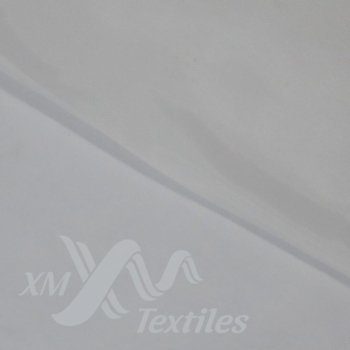Workwear fabrics
-


52gsm | 100% Polyester | Plain 1/1
(0 Certificates)
Workwear fabric
Taffeta 190T is a multi-purpose polyester fabric. It is used for lining workwear and tourist clothing. Water repellent impregnation, polyurethane or polyvinyl chloride coating makes it water resistant and protects it from wind and rain.[show_more more="Show more" less="Show less" color="#629e11" align="left" ]Taffeta 190T can therefore be used for winter clothing, backpacks and lightweight tents. The fabric has an interesting weave that does not wear off over time and retains its pattern.
Taffeta-190T features
– Water repellent finish
– Excellent wind resistance
– Soft to the touch
– Hypoallergenic
– Does not stretch when wet
– Retains shape after washing[/show_more]Key features: Breathable, Light weight
Certifications: Oeko-tex 100
POLYESTER FABRICSTAFFETA-190T
52gsm | 100% Polyester | Plain 1/1
(0 Certificates)
Workwear fabric
Taffeta 190T is a multi-purpose polyester fabric. It is used for lining workwear and tourist clothing. Water repellent impregnation, polyurethane or polyvinyl chloride coating makes it water resistant and protects it from wind and rain.[show_more more="Show more" less="Show less" color="#629e11" align="left" ]Taffeta 190T can therefore be used for winter clothing, backpacks and lightweight tents. The fabric has an interesting weave that does not wear off over time and retains its pattern.
Taffeta-190T features
– Water repellent finish
– Excellent wind resistance
– Soft to the touch
– Hypoallergenic
– Does not stretch when wet
– Retains shape after washing[/show_more]Key features: Breathable, Light weight
Certifications: Oeko-tex 100
XM Textiles™ is a company that specializes in designing and producing fabrics for various types of workwear such as ESD clothing, HiVis garments, and other work clothing. Our workwear fabrics are certified by OEKO-TEX® Standard 100, guaranteeing their safety and compliance with ecological standards. We have implemented a stringent quality control process to ensure that every meter of fabric you receive meets all your expectations. With warehouses located in Vilnius and Bucharest, we are able to maintain a large inventory of fabrics for prompt delivery. Since 2002, clients from 51 different countries have trusted our fabrics for their workwear needs.
